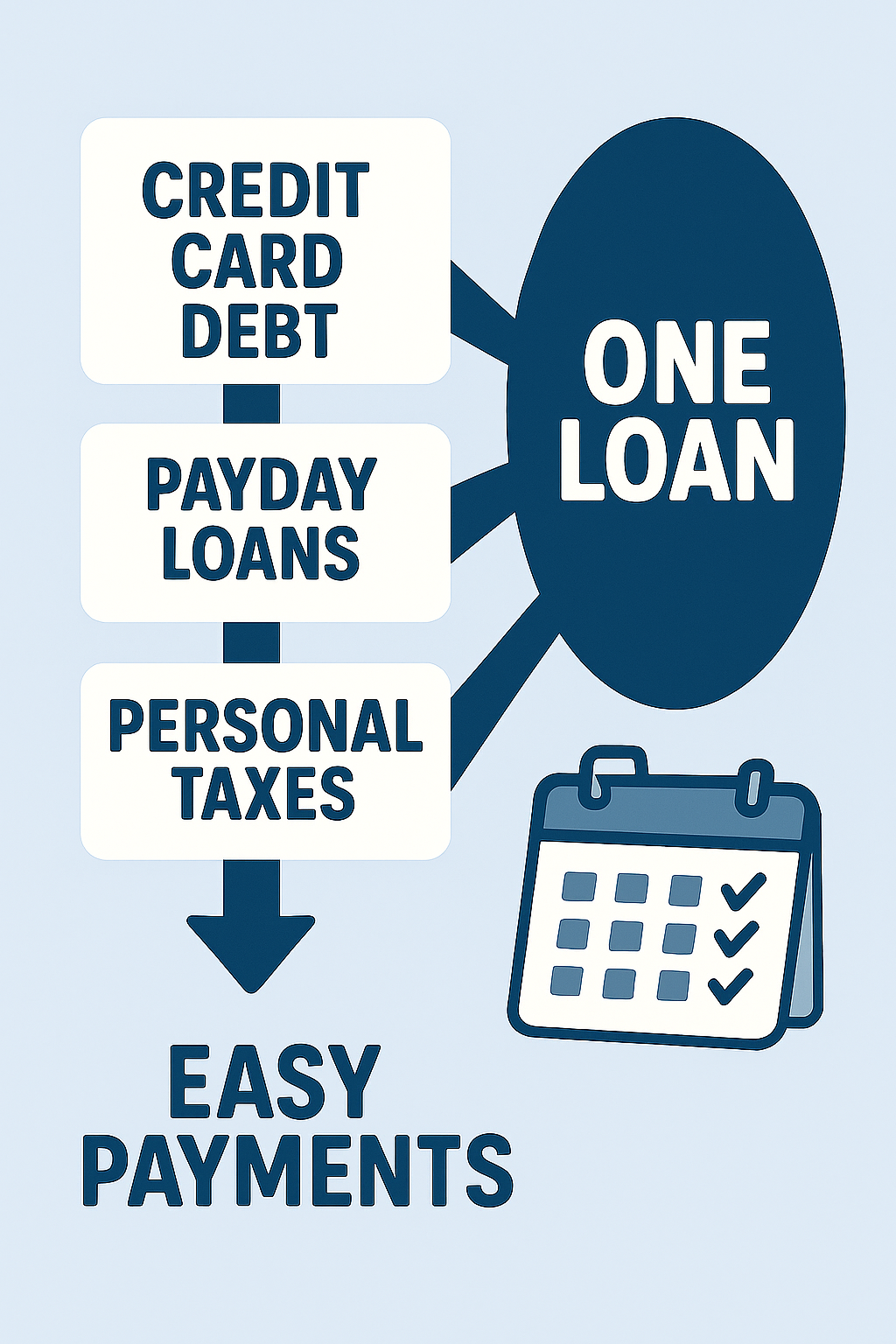Table of Contents
ToggleCan child and spousal support income really help you qualify for a mortgage in Canada?
The short answer: yes, it can—but only if it’s well-documented, consistent, and legally enforceable. Many Canadians going through a divorce or separation rely on child and spousal support income as part of their household finances. Lenders will often consider this income when calculating your mortgage approval, but the process requires extra documentation compared to standard employment income.
This guide explains how lenders treat child and spousal support income, what documents you’ll need, common mistakes to avoid, and alternative solutions if you run into roadblocks.
Key takeaway: With the right preparation, support payments can significantly strengthen your mortgage application in Canada.
Understanding Child and Spousal Support Income in Canada
When families separate, courts or separation agreements often establish ongoing financial support. Both child and spousal support income can be recognized as legitimate income for mortgage approval. However, lenders look closely at the structure and enforceability of these payments.
What Counts as Child Support Income?
-
Payments made from one parent to another for the care of children.
-
Typically court ordered or outlined in a separation agreement.
-
Must usually continue for at least three years into the future for lenders to count it.
What Counts as Spousal Support Income?
-
Also known as alimony, these are payments made to support a spouse after separation or divorce.
-
Amount and duration are based on legal agreements or family court orders.
-
Lenders want to see consistency and future continuation of payments.
| Aspect | Child Support Income | Spousal Support Income |
|---|---|---|
| Purpose | Covers children’s living expenses (food, clothing, housing, education) | Supports former spouse’s financial stability post-divorce or separation |
| Duration | Typically lasts until child reaches age of majority (18 or 19, depending on province) or completes school | Duration depends on court decision or separation agreement; can be temporary or indefinite |
| Tax Treatment | Not taxable for the recipient and not deductible for the payer (CRA rule) | May be taxable for recipient and deductible for payer (depending on agreement) |
| Lender Requirements | Must continue at least 3 years into the future to qualify | Must show enforceable agreement and future continuation |
| Common Documentation | Court order, separation agreement, bank statements showing deposits | Court order, lawyer-legal agreement, bank statements, CRA Notice of Assessment |
Key takeaway: Both forms of support can strengthen your mortgage application, but lenders assess them differently. Proof of continuation and proper documentation are crucial whether you are relying on child support income or spousal support income.
Divorce and Separation Statistics in Canada
Divorce and separation are more common than many people think, and they directly impact how often child and spousal support income plays a role in mortgage qualification. According to Statistics Canada, roughly 38–40% of marriages end in divorce before their 30th anniversary. In addition, thousands of common-law partnerships dissolve every year, many of which also involve support obligations.
In 2022, the most recent year with available national data, over 42,000 divorces were finalized in Canada. While divorce rates have gradually declined from the 1990s peak, the reality is that separation remains a significant life event for many Canadians. Every year, tens of thousands of families must navigate new financial realities, including mortgage financing.
When children are involved, child support is nearly always ordered or agreed upon. The Department of Justice Canada notes that most support arrangements are either court ordered or laid out in a legal separation agreement. These payments are enforceable and therefore carry weight with lenders.
Key takeaway: With nearly four in ten marriages ending in divorce, using support income in mortgage applications is a regular occurrence. Lenders are prepared to accept well documented child and spousal support income as part of the mortgage approval process.
How Lenders View Support Income for Mortgages
Banks, credit unions, and private lenders all have slightly different rules when assessing child and spousal support income. Your mortgage application should always indicate all sources of income to tell your story and increase your chances of approval.
Institutional Lenders (A-Lenders)
-
Require strong documentation: separation agreement, bank statements, and proof that payments will continue.
-
Typically, ask for 3–6 months of consistent deposits.
-
Support income must be enforceable through a court order or legal agreement.
B-Lenders and Private Lenders
-
More flexible with credit issues or new separation situations.
-
May accept shorter proof of payment history.
-
Useful option if your credit score was impacted during divorce or separation.
Key takeaway: The more consistent and documented your child and spousal support income, the more likely an institutional lender will accept it. If not, private mortgage financing may still be available.
Documents Needed to Use Support Income for a Mortgage
One of the most important parts of qualifying with child and spousal support income is providing the right paperwork.
Here’s what lenders usually want:
| Document | Why It’s Needed | Lender Expectation |
|---|---|---|
| Court Order / Separation Agreement | Legal proof of support | Must be signed, dated, and legally binding |
| Bank Statements (3–12 months) | Shows consistent deposits | No missed months or large gaps |
| Notice of Assessment (CRA) | Proof income is declared | Matches support income reported |
| Lawyer Legal Confirmation | Confirms enforceability | Shows agreement is valid and enforceable |
Common mistake: Many borrowers assume a verbal arrangement will suffice. Unfortunately, lenders won’t recognize undocumented payments—even if they’ve been happening for years.
Challenges and Common Mistakes When Using Support Income
Even with a legal order, some issues can cause problems when trying to use child and spousal support income to qualify for a mortgage.
Inconsistent Payments
If your ex misses or delays payments, lenders may reduce or disregard the income.
Informal Agreements
Without a court order or a lawyer-legal separation agreement, lenders have the option to not count the payments.
Overstating Income
Sometimes borrowers include payments that are not enforceable or set to expire soon. Lenders will check future continuation.
Common myth: “Any child and spousal support income counts automatically.”
Reality: Lenders only count income that is consistent, documented, and mainly legally enforceable.
Alternative Options if Support Income Alone Isn’t Enough
Not every borrower can rely solely on child and spousal support income to qualify for a mortgage. If it’s not enough, here are solutions:
-
Combine with employment income: Lenders will add support income to your regular earnings.
-
Consider private mortgage lenders: They are more flexible but come with higher rates and fees.
-
Use a co-signer or guarantor: A family member can strengthen your application.
-
Refinance later: Once you establish stronger credit or a longer payment history, you may qualify with a traditional bank.
Key takeaway: Even if support income isn’t enough today, there are paths to homeownership or refinancing.
Case Study Example
Emily’s Story (Fictional)
Emily, a single mother in Ontario, receives $1,200/month in child support income and $800/month in spousal support income. Her court order ensures payments continue for another five years.
When Emily applied for a mortgage, her bank required:
-
Six months of bank statements showing consistent deposits
-
Her legal separation agreement was signed by both parties
-
A letter from her lawyer confirming enforceability
Because Emily had reliable documentation for her mortgage application, the lender included both her employment income and her child and spousal support income in their calculations. This allowed her to qualify for a home in Whitby, Ontario, even though her salary alone wouldn’t have been enough.
Key Takeaways for Homebuyers Using Support Income
-
Proof and consistency matter most. Lenders want to see documented, reliable support payments.
-
Child and spousal support income can strengthen your mortgage application, but only if legally enforceable.
-
Work with a mortgage professional early to ensure your documents are lender-ready.
Frequently Asked Questions
Q1: Can I use both child and spousal support income together in my mortgage application?
A: Yes. Lenders will combine both if they are well-documented and consistently paid. Together, they can significantly increase your qualifying power.
Q2: Do private lenders accept support income?
A: Many private lenders will, but they still expect proof of consistent deposits. They can be a solution if banks are hesitant.
Q3: How long must I show proof of child and spousal support income?
A: Most lenders require 3–6 months of proof. Some may ask for a full year, especially if payments have been inconsistent.
Q4: What if my ex stops paying support?
A: If payments stop, lenders may not include them in your mortgage qualification. You may need to enforce payment through legal channels or rely on other income.
Q5: Do I need a lawyer for my separation agreement?
A: Yes, ideally. Lenders prefer a lawyer-legal agreement or court order. Informal arrangements rarely count toward mortgage approval.
- Hard Money Lenders in Ontario: A Comprehensive Guide for 2025 - November 25, 2025
- Skip a Mortgage Payment? Here’s What Canadian Homeowners Should Know - September 26, 2025
- Using Equity Without Refinancing Safely Borrow in Canada: 3 Key Ways - September 18, 2025






